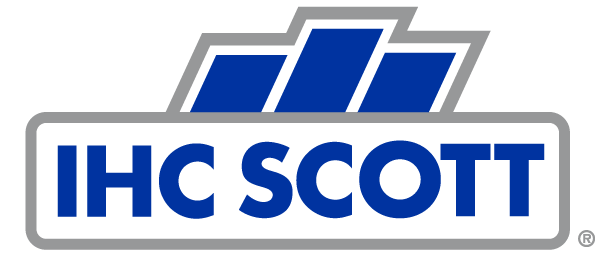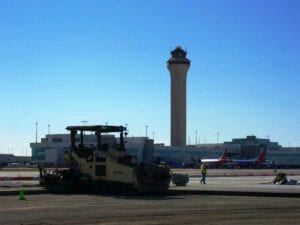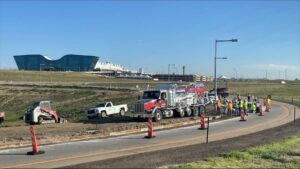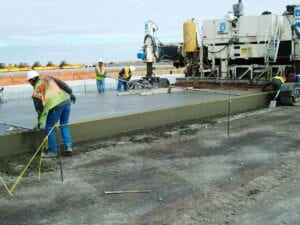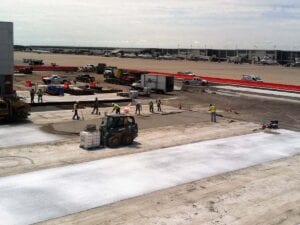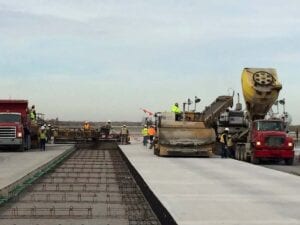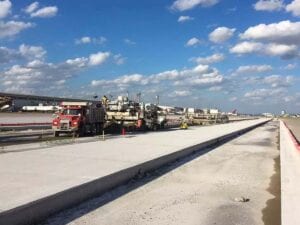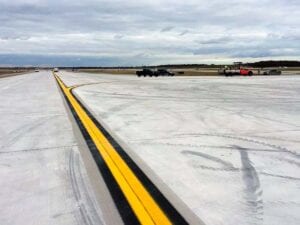Airfield Rehabilitation and Modification, Detroit Metropolitan Airport
- Owner: Detroit Metropolitan Wayne County Airport
- Location: Detroit, Midway
- Completion Date: 30 Oct 2017
- Awards: Michigan Awards of Excellence (Airports), 2017 MCA
- Core Competencies: Airports|Concrete Paving|Industries|Services
Related Projects
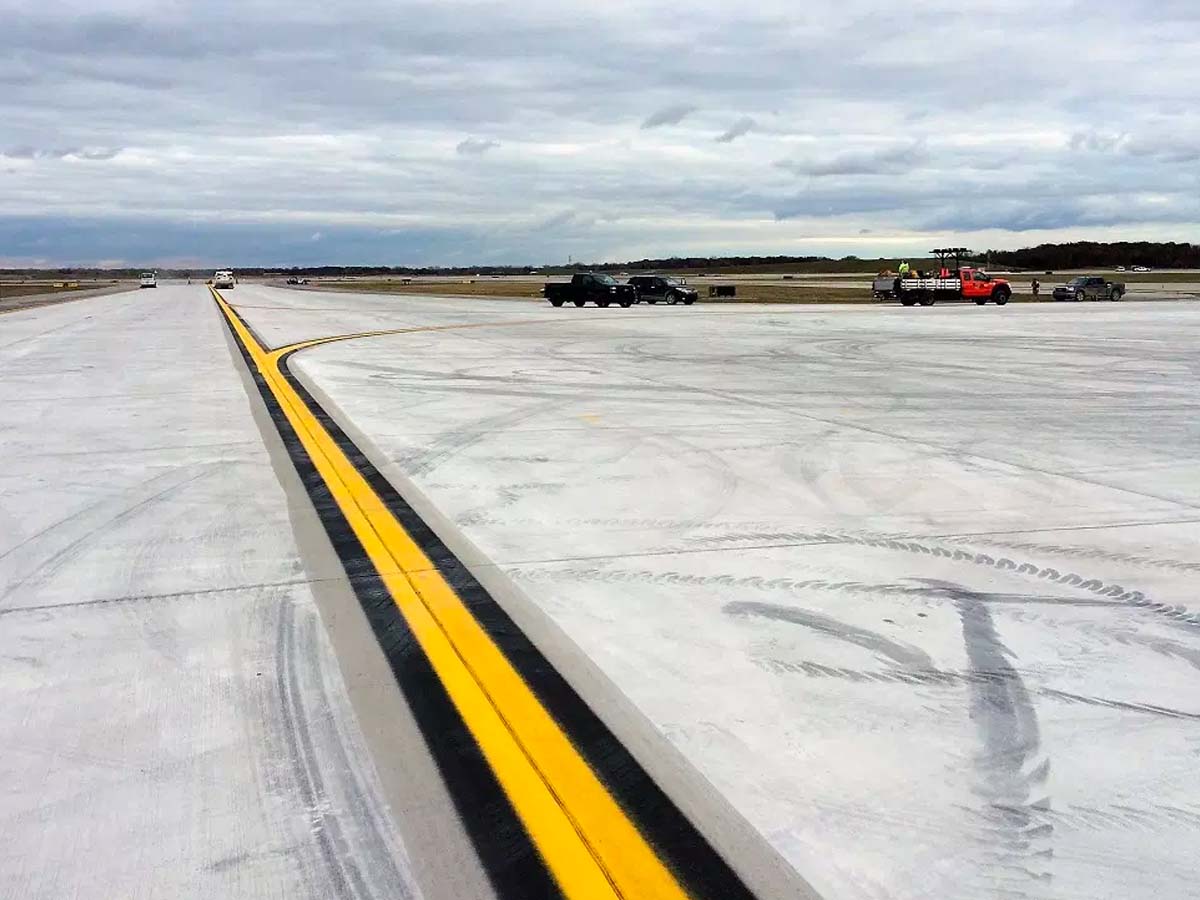
Detroit Metropolitan Airport (DTW) is one of the busiest airports in the nation. To ensure the airfield quality and safety of the traveling public, continuous maintenance and repairs of the airfield pavement is essential. The Wayne County Airport Authority (WCAA) has implemented an airfield pavement rehabilitation project for areas which are exhibiting signs of surface distress, have deteriorated to the point where standard maintenance repairs are no longer appropriate, and are currently producing Foreign Object Debris (FOD) – a critical safety concern.
In 2015, a three year pavement rehabilitation and maintenance contract was issued to Interstate Highway Construction, Inc. (IHC) by WCAA. This contract incorporated the reconstruction and modification of multiple project locations within the Airfield Operations Area at DTW and Willow Run Airport. Major highlights of the project included; 110,000 SYs of concrete removal and replacement at 20 terminal aircraft gate positions, 135,000 SYs in construction of 1 new taxiway and reconstruction of 2 taxiways, with full depth replacement of 4 infield grass islands to increase the pavement surface area for necessary aircraft lane capacity and parking. Additional projects included check point rehabilitation, full depth PCCP panel replacements, numerous HMA mill & fills, jet bridge removals, joint rehabilitation, partial depth spall repairs, removal and replacement of existing underground utilities, improvements to existing airfield lighting, signage and pavement markings.
Partnering on the project was a combined effort between all team members. Safety, security, quality, schedule and financial goals were all accomplished; underscoring the nature of the partnering that existed, and the level of success achieved on this project.
With the massive amount of trucking required for multiple concurrent construction operations, specific haul routes were implemented for each project access point within the McNamara infield. With new projects being continuously added to the scope of work while other projects were completed, the haul routes were constantly changing, which increased the risk for safety concerns. With the help from Delta Operations, flaggers were required to provide specific verbal (via radio) and visual cues for the construction traffic, letting them know when to safely cross active taxi-lanes and taxiways. Safety and security goals were surpassed on the project with zero lost time accidents.
